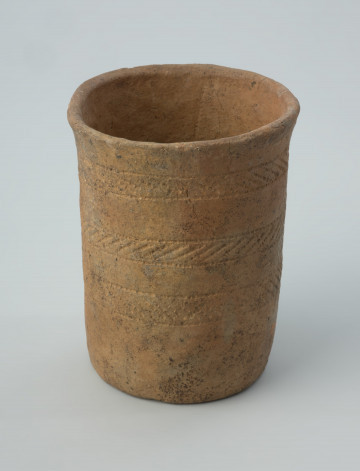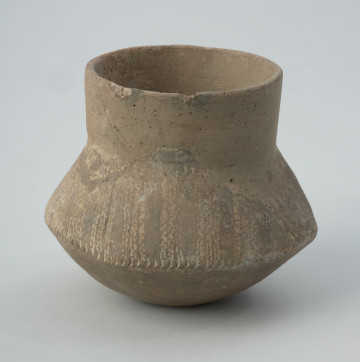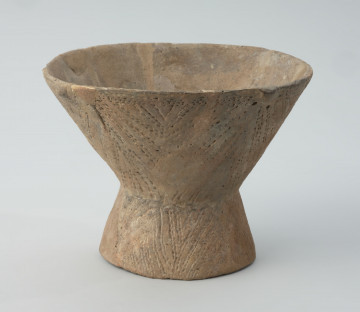
Decorated mortarboard goblet
National Museum in Szczecin
Part of the collection: Stone Age
The circumstances and context of discovering archaeological artefacts, especially ancient finds that found their way into museum collections many years ago, are sometimes very poorly documented and controversial. Such a lack of preserved history of the discovery concerns a Neolithic earthenware vessel of the Globular Amphora culture, purchased on 10 March 1935 by the Pomeranian State Museum (Pommersches Landesmuseum) in Szczecin. The two-headed amphora with a spherical body and cylindrical neck, decorated with punctures made with a two-toothed tool, together with a fragment of a Neolithic flint axe and a clay vessel from the Roman period, was brought to the museum on 10 February 1935 by Mr Däumichen, a chemist from Szczecin Żelechów. Subsequent archival records show another relic provided by him, i.e. a bronze buckle from the Roman period. All the objects were supposed to have come from the village of Bardy (German: Bartin) near Kołobrzeg or the neighbouring Dębogard (German: Damgardt). Therefore, it can be assumed that they were discovered on the border of these villages, in the area of deposits of Jurassic limestone, clay, and peat exploited for many years. However, we do not know the circumstances or the date of their discovery, nor do we know whether they came from precisely the same place. The oldest references suggest that the vessels may have been found in a bog. Swamp deposits of pottery, interpreted as votive gifts, belong to the canon of the behaviour of the Globular Amphora culture communities. However, some authors tended to associate the find with grave furnishings, supporting this thesis with the presence of a flint axe. Others claimed that there was no flint tool at all. However, regardless of these considerations, all the abovementioned artefacts from Bards, including the axe fragment, are currently held in the collection of the National Museum in Szczecin.
Krzysztof Kowalski
Author / creator
Dimensions
cały obiekt: height: 16.5 cm
Object type
ceramic, vessel (container)
Technique
firing; manual modelling, modelling
Material
clay
Origin / acquisition method
acquisition
Creation / finding place
Owner
National Museum in Szczecin
Identification number
Location / status

National Museum in Szczecin

National Museum in Szczecin

National Museum in Szczecin
DISCOVER this TOPIC
National Museum in Lublin
DISCOVER this PATH
Educational path